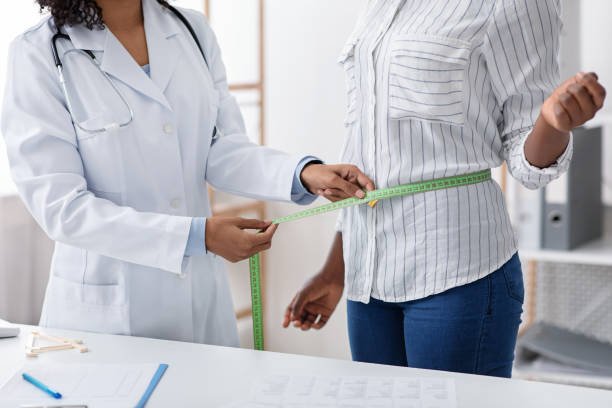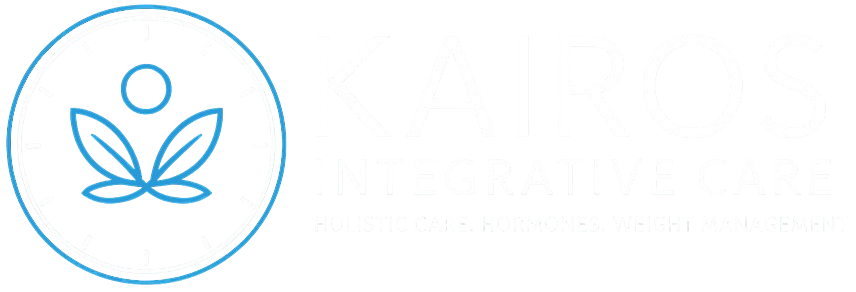You know your weight. Maybe even your BMI. But what if the shape of your body, especially your waistline, was telling a more accurate story about your health?
At Kairos Health Integrative Primary Care, we’ve learned that weight alone rarely tells the full story. That’s where the Body Roundness Index (BRI) comes in. It’s a more modern and insightful way to understand your body composition, particularly the type of fat that affects your heart, hormones, and metabolism.
Unlike the scale, BRI doesn’t just tell you how much you weigh. It tells you where your fat is and why that matters more than you think.
What Is the Body Roundness Index?
The Body Roundness Index is a newer tool that looks at your waist circumference concerning your height. It’s designed to estimate the amount of fat you carry around your midsection, specifically visceral fat.
Unlike traditional measures like BMI (Body Mass Index), which simply compares your weight to your height, BRI gives a better picture of where your fat is stored, especially around your belly, which is the most metabolically active and risky area for fat to collect.
So instead of asking “How much do you weigh?” BRI helps answer the more important question:
“Where is your fat, and what is it doing to your health?”
Why We Use BRI Instead of Just BMI?
BMI has been the go-to health number for years, but it has major limitations. It doesn’t distinguish between muscle and fat. It doesn’t show us where fat is stored. And it can mislead people into thinking they’re healthy when deeper risks are developing.

BRI tells us more about your shape than your size. And when it comes to health, your shape, especially in the abdominal area, can be a major early warning sign for:
- Blood sugar issues
- Hormonal imbalances
- Fatty liver
- High cholesterol
- Heart disease risk
Studies have confirmed that BRI gives a more accurate body fat percentage and internal fat risk than traditional BMI
What Your Body Shape Might Be Telling You
When your body starts storing fat around the middle, especially without changes in diet or movement, it reflects something deeper.
Maybe you’ve been under more stress, sleeping poorly, or your thyroid has slowed down. Perhaps you’re entering a hormonal shift like perimenopause or dealing with low testosterone.
This stubborn fat can interfere with how your body burns energy, clears cholesterol, and even thinks. You might feel more foggy, more inflamed, or simply not like yourself.
That’s why understanding BRI is so important. It shows us when your body needs attention, even before your labs flag a problem.
BRI Vs Waist Circumference
You may be familiar with waist circumference as a health measure, and for good reason. It’s a helpful sign, especially if it’s over:
- 35 inches (88 cm) for women
- 40 inches (102 cm) for men

But BRI takes this a step further. It adjusts for your height, giving us a more accurate view of body fat distribution for people who may be taller or shorter than average.
For example, someone who is shorter with a 36-inch waist may have a higher health risk than someone taller with the same waist size. BRI helps uncover those risks.
How We Use BRI at Kairos Integrative Care
If your waistline feels like it’s changing, even when your diet and exercise haven’t, you’re not imagining it. At Kairos Health Integrative Primary Care, we take that seriously.
Using the Body Roundness Index along with functional testing, we assess how your body is responding to stress, food, and hormones.
We may look at:
- Thyroid and adrenal function to understand metabolism and energy
- Insulin and glucose markers to catch early signs of resistance
- Liver health and cholesterol patterns to spot fat-processing problems
- Inflammation and nutrient status that may be slowing your progress
Causes of Higher BRI
A higher BRI usually means increased belly fat, but the causes can vary. It can be caused by:
- Chronic stress can signal your body to store more belly fat, even if your diet is clean.
- Poor sleep, even for a few nights, can raise your Body Roundness Index.
- Missing nutrients like magnesium, choline, or omega-3s can slow how your body processes fat.
- Hormonal shifts, including low testosterone or thyroid issues, often show up around the waist.
- Blood sugar problems, like early insulin resistance, make belly fat much harder to lose.
Tips to Balance Your BRI
You don’t need to crash diet or over-exercise to change your BRI. We’ve seen the best results from body-supportive habits such as:
- Focus on muscle-building movements like strength training or walking after meals
- Walk for 10 to 15 minutes to help balance blood sugar.
- Fill your plate with protein, fiber, and healthy fats
- Support your gut and liver to improve digestion and fat metabolism
- Don’t underestimate the power of better sleep and stress relief. When your nervous system is calmer, your metabolism works better, too.
Let’s Explore What Your Shape Is Saying
If your waist is changing or your energy feels off, your body might be asking for support.
At Kairos Health Integrative Primary Care, Lola, one of our Board-Certified Nurse Practitioners, uses tools like the Body Roundness Index (BRI) and lab testing to find out what’s really going on. We’re here to help you build a plan that fits your body and your health goals.
We serve patients in Houston, Sugar Land, and nearby zip codes 77046 & 77478 and accept most major insurance plans, including Aetna, Cigna, BCBS, UnitedHealthcare, Tricare, and more.
Book your appointment today.




